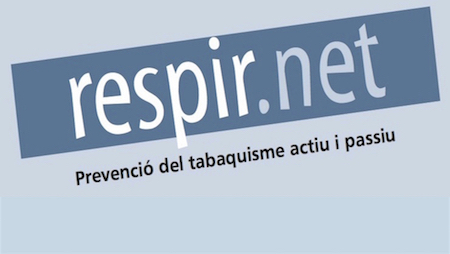RESPIR.NET: Respiratory symptoms, asthma and passive smoking in children
Respiratory symptoms, asthma and passive smoking in children: efectiveness of an integrated individual, family, and school-based intervention (RESPIR.NET Study)
Background
The available epidemiological evidence indicates that involuntary or passive smoking (also known as exposure to environmental tobacco smoke or to second-hand smoke, SHS) by children is linked, among other adverse health effects, to respiratory diseases, and particularly, asthma. While children exposure to passive smoking is produced primarily at home, the environments in which children are exposed extend beyond the home to other settings. Hence, multilevel interventions (children, parents/caregivers, schools) aiming at reducing parents’ and other carergiver’s smoking or by changing smoking location as well as to increase awareness of passive smoking effects in children, may reduce children’s exposure to passive smoking and its adverse consequences on respiratory health.
Main objective
To evaluate the effectiveness of a multilevel intervention (individual, family, school) to prevent passive smoking and its impact upon respiratory health among children aged 12-14 years old.
Methodology
Design: Randomized controlled trial with schools as units of randomization (complete vs. minimal intervention). Setting: 25 high schools (from the Metropolitan Area of Barcelona, Spain). Subjects: 3700 schoolchildren aged 12-14 years old in 1st and 2nd year of Compulsory Secondary School (academic year 2005-2006). Procedures: 1) Design of the multilevel intervention and the questionnaire for SHS assessment; 2) assessment of the baseline situation of children regarding respiratory health and SHS exposure; 3) implementation of the intervention; and, 4) assessment of intervention effectiveness by assessing respiratory health and SHS exposure in children 8 months after the intervention. Main measurements: 1) Respiratory symptoms: use of ISAAC questionnaire, will use the validated and translated (Catalan and Spanish) 2) SHS exposure: use of a questionnaire, including SHS exposure at home, leisure time, and other environments, and determination of nicotina concentration in hair as a biomarker of SHS exposure in a random sample of 700 children. Intervention: Design of a stepped-care approach, with initial minimal-contact advice provided by trained intervention personnel in the school (group activity) with feedback and printed supplemental materials (individual activity), with greater intensity and duration in follow-up (letter to children and parents).
Workpackages
- WP1. Coordination, implementationm of intervention, data analysis and dissemination (ICO-IDIBELL, WP Leader: Esteve Fernández).
- WP2. Intervention design and evaluation (ASPB, WP Leader: Manel Nebot).
- WP3. Nicotine assessment (IMIM, WP Leader: José A. Pascual).
Budget
€ 283,790,00
Duration
36 months: from 03/2005 to 03/2008
Funding
Fundació “La Marató de TV3”
Principal investigator and coordinating center
Dr. Esteve Fernández, Tobacco Control Unit-Catalan Institute of Oncology
- Ariza C, Schiaffino A, Pascual JA, Twose J, Nebot M, Fernandez E. Exposición al humo de tabaco y concentración de cotinina en saliva en una muestra de escolares de Barcelona. Medicina Clinica (Barc). 2009; 133:622-5.
- Martín-Pujol A, Fernández E, Schiaffino A, Moncada A, Ariza C, Blanch C, Martínez-Sánchez JM; RESPIR.NET research group. Tobacco smoking, exposure to second-hand smoke, and asthma and wheezing in schoolchildren: a cross-sectional study. Acta Paediatrica. 2013;102:e305-9.
- Blanch C, Fernández E, Martínez-Sánchez JM, Ariza C, López MJ, Moncada A, Schiaffino A, Rajmil L, Saltó E, Pascual JA, Nebot M; RESPIR.NET research group. Impact of a multi-level intervention to prevent secondhand smoke exposure in schoolchildren: a randomized cluster community trial. Preventive Medicine. 2013;57:585-90.
- Respir.net Group. Símptomes respiratoris, asma i tabaquisme passiu en escolars: efectivitat d’una intervenció individual, familiar i escolar. Barcelona: Fundació La Marató; 2003.





